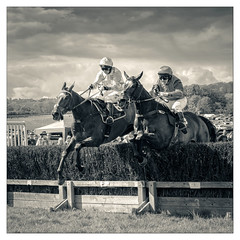Although it is true that I already have a strong aversion towards democracy, that doesn’t necessarily mean that I dislike all those who work within that political system. Technically, democracy was brought here by the invading White Anglo-Saxon Protestants a.k.a. the North American invaders. The leaders of the much revered Malolos Congress were pioneers of democracy or republicanism. But that doesn’t equate them to becoming corrupt individuals. Yes, democracy failed from the very start. Many scrupulous persons were swallowed by political perversion brought about by democracy’s defects. However, if we are to compare the players of today’s democracy to yesterday’s, Noynoy Aquino, Erap Estrada, Manny Villar, et al., would have paled in comparison to their predecessors who lived during pre-war Philippines, a fabled time when our country still knew how to respect herself.
Thus this blogpost is my commendation to one of that epoch’s incorruptibles: Justo Lukbán of Labo, Camarines Norte. It is his birth anniversary today. Lukbán (originally spelled Lucbán during earlier times when there was still no prejudice against Fil-hispanic orthography) was a former politician during a time when democracy was, in a way, less corrupt. He lived during a time when the Spanish language was still the country’s lingua franca, a time when the “gentleman of the old school” reigned supreme, when our Filipina maidens were still pure and virginal, when Christianity in the Philippines was still one and strong, a time when Philippine literature was in its época de oro or fase de plenitud, when most Filipinos were hombres renacentistas, an era when our country had reached the pinnacle of glory. If only Filipinos of today were like Señor Lukbán and his astounding contemporaries…
Below is a brief biographical sketch of this eminent politician written by Héctor K. Villaroel (from the 1965 book Eminent Filipinos which was published by the National Historical Commission, a precursor of today’s National Historical Institute which was recently renamed the National Historical Commission of the Philippines on 12 May 2010).
JUSTO LUKBÁN
(1863-1927)Justo Lukbán, a member of the Malolos Congress in the days of the Philippine Revolution, was born in Labo, Camarines Norte, on May 28, 1863, to Agustín Lukbán and Andrea Rillos.
He obtained his early education in a private school conducted by Hugo Ilagan and studied at San Juan de Letrán from 1873, where he obtained his Bachelor of Arts in 1880. He enrolled in medicine at the University of Santo Tomás afterwards; and in 1884, while still a medical student, he was appointed Ayudante Director of the institution’s School of Medicine. He graduated in 1888 and soon opened his own private clinic in Manila.
When the revolution broke out, he joined his brother, General Vicente Lukbán, and was elected delegate of Ambos Camarines to the Malolos Congress. Authorized to collect money for the cause of the revolution, he turned in ₱20,200 for the Revolutionary Government.
During the American Regime, he was appointed district health officer of Ambos Camarines. When complete peace and order was re-established, and political parties were permitted to be organized, he was one of those who actively initiated the formation of the Nacionalista Party in 1906. Meanwhile, he became editor of La Independencia.
In 1909, he was delegate of the first district of Manila to the National Assembly; he was re-elected in 1910. Later elected as Mayor of Manila, he created a controversy by banishing to Mindanáo all women of ill repute. At the instance of Governor-General Leonard Wood, he was appointed President of the Board of Appeals.
He died on September 2, 1927 of heart disease.








